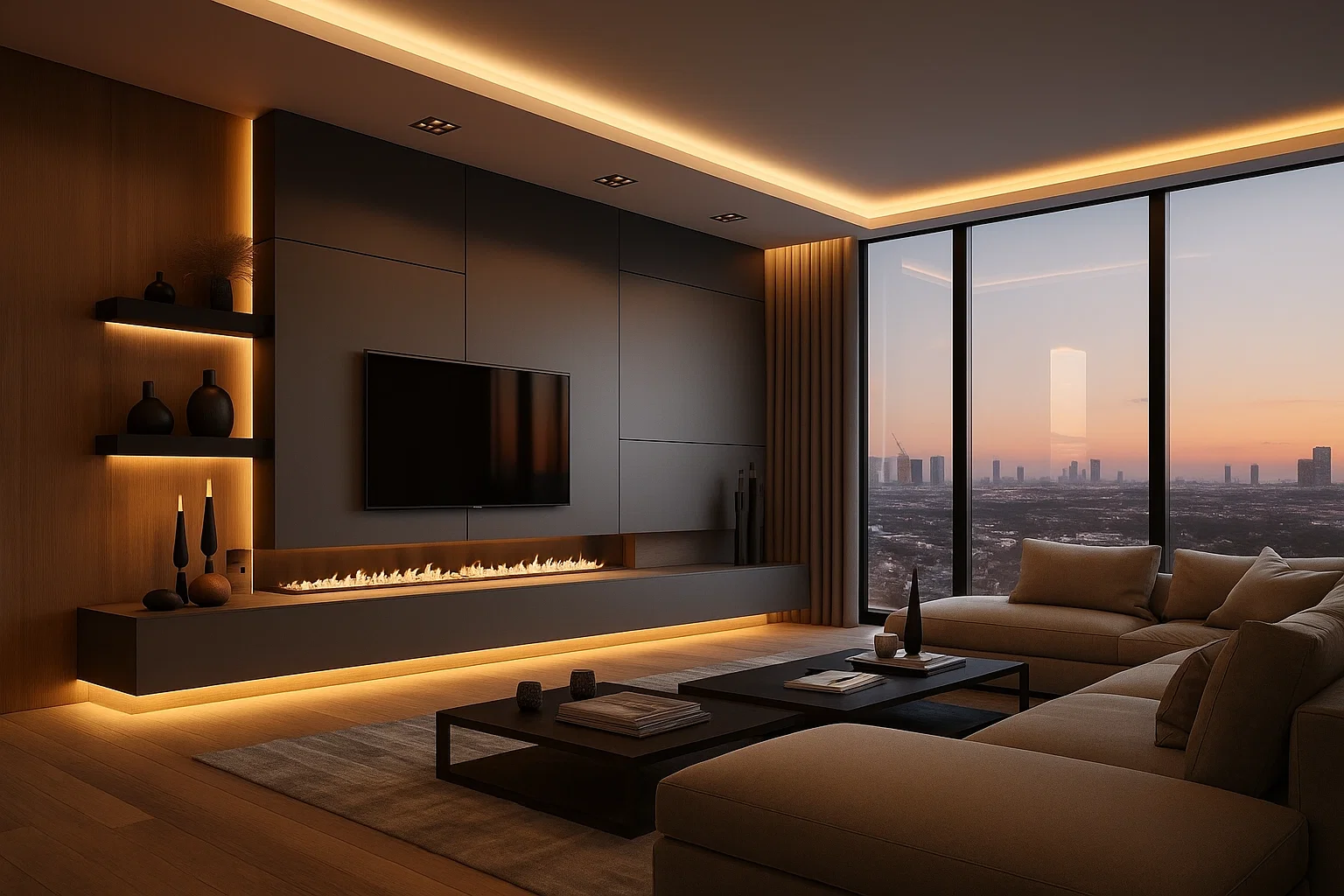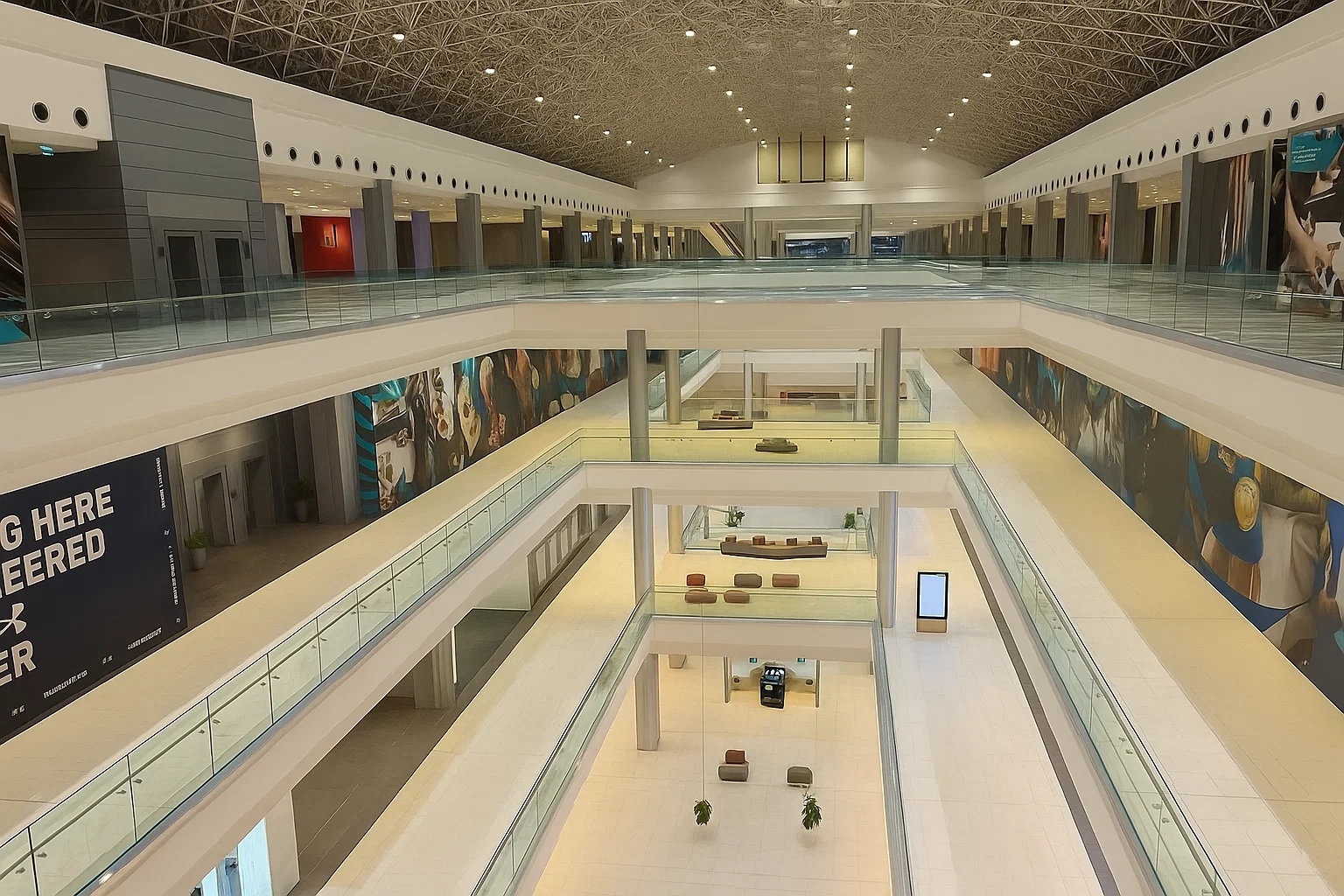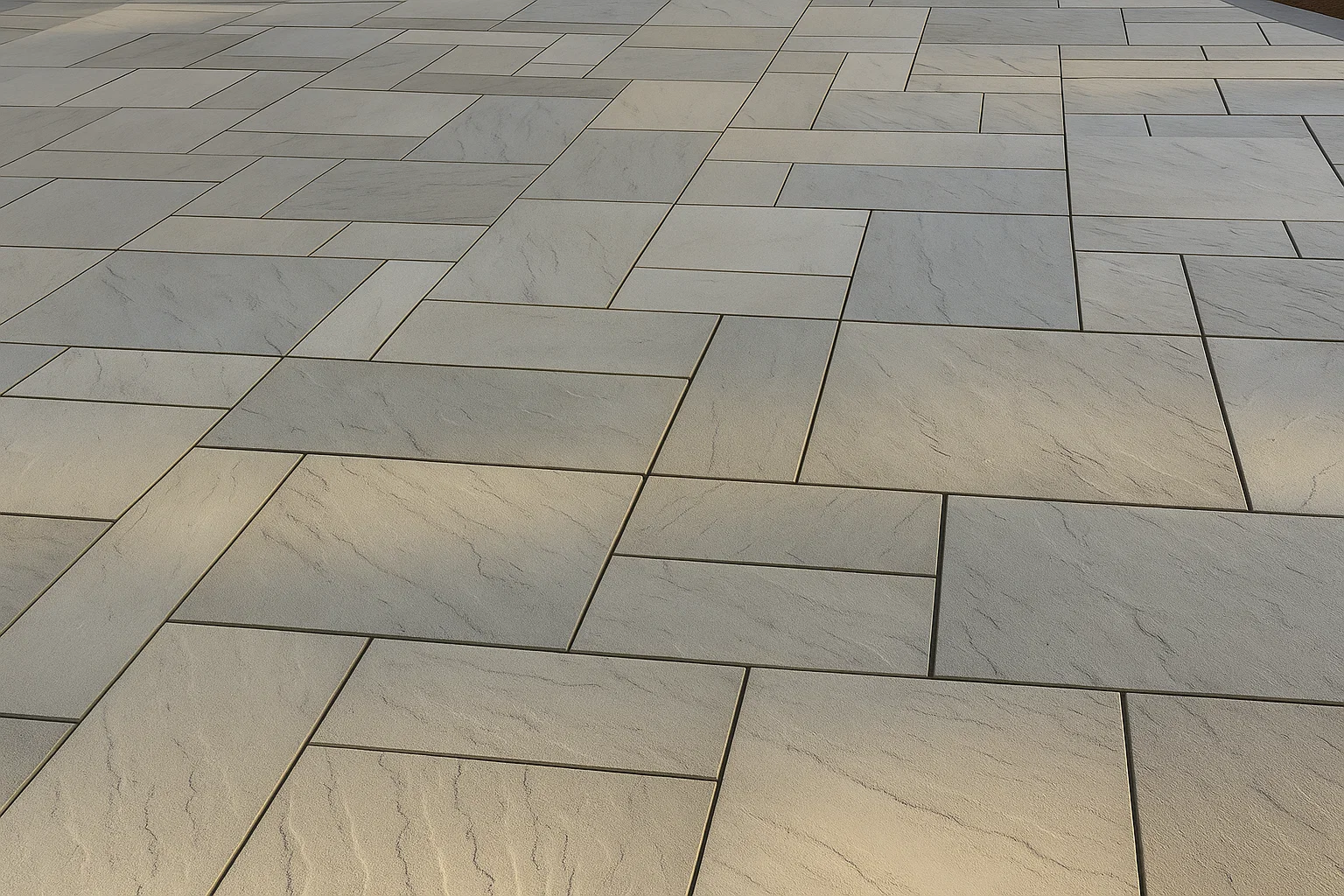Natural Lighting Comparison with Artificial Lighting
What Is Natural Lighting?
Natural lighting describes all sunlight that enters a space through windows, skylights, courtyards, and light tubes. Its role in Saudi homes goes beyond aesthetics; it influences daily comfort, health, and electricity bills. When façades are carefully designed and shading and ventilation are properly tuned, natural lighting in buildings becomes the foundation for comfortable living and higher sustainability without sacrificing privacy.
Advantages of Natural Lighting
Before listing the perks, it’s important to note that natural lighting provides a color spectrum closer to what the eye perceives outdoors, which directly improves mood, color perception, and detail quality inside a room. In homes that receive balanced daylight, occupants often feel visual fullness and calm.
Table: Why do residents prefer natural lighting?
| Advantage | What it means in practice |
|---|---|
| Health & visual comfort | Less eye strain, better support for circadian rhythm |
| Lower costs | Fewer hours of lamps on and smarter AC use when shading is optimized |
| Color accuracy | More precise selection of finishes and paints under daylight-like conditions |
| Sustainability | Reduced emissions and higher building efficiency |
| Property value | Higher market appeal for units with good solar orientation |
Disadvantages of Natural Lighting
Despite its benefits, natural lighting isn’t fully controllable—it varies with time, seasons, and cloud cover, and can introduce glare or heat gains if façades and glazing aren’t treated with proper shading elements. Large openings may also challenge privacy unless architectural solutions are applied.
Table: Common challenges and solutions
| Challenge | Potential impact | Practical fix |
|---|---|---|
| Intensity fluctuation | Uneven lighting between morning and evening | Operable blinds, daylight sensors, Low-E glazing |
| Glare | Visual discomfort and loss of detail | Horizontal/vertical sun breakers, matte finishes |
| Solar heat gain | Higher cooling loads | Exterior canopies, high-level ventilation, inner courtyards |
| Privacy | Direct views into the interior | Partially reflective glass, mashrabiyas, taller sash heights |
What Is Artificial Lighting?
Artificial lighting complements the sun and takes over when natural lighting recedes. Its strength lies in control: you can dim intensity, schedule operation, and choose light color temperatures to suit the activity. It’s essential for consistent illumination in deep or night-time areas and becomes more effective when paired with motion and daylight sensors.
Advantages of Artificial Lighting
Since homes don’t all enjoy ideal orientation, artificial lighting provides a safety net that can be tuned throughout the day to match use, enabling dynamic lighting scenes for work, relaxation, and hosting.
Practical benefits:
- Full control of intensity and timing via dimming and scheduling.
- Uniform coverage for zones far from windows.
- Flexible light color temperatures: warm (2700–3000K) for living areas, neutral (3500–4000K) for kitchens and offices, and cool (5000–6500K) for precise daytime tasks.
Disadvantages of Artificial Lighting
Despite its flexibility, artificial lighting may feel less natural if not layered well or if low-quality products are used, and it entails ongoing operation and maintenance. Glare often arises from exposed sources or poor beam distribution.
Points to watch:
- Electricity use and periodic maintenance of lamps and drivers.
- Glare risk with exposed sources or poor distribution.
- Less natural color feel compared to daylight.
Types of Artificial Lighting
Before buying fixtures, understand layered lighting—combining types ensures comfort and efficiency and fills in areas that natural lighting in buildings doesn’t reach.
Table: Main types and uses
| Type | Function | Common examples |
|---|---|---|
| Ambient (General) | Overall background illumination | Recessed spotlights, ceiling LED panels |
| Task | Focused light for specific activities | Under-cabinet kitchen lights, desk lamps |
| Accent | Highlighting aesthetic elements | Aimable spots for artwork or feature walls |
| Strip/Concealed | Soft glow without glare | LED strips in coves/behind features |
| Smart control | Efficiency and comfort | Motion sensors, daylight sensors, preset scenes |
Difference Between Natural and Artificial Lighting
Integration—not competition—is the golden rule. Daylight sets the overall feel, while artificial lighting refines the scene at night or in deep zones. The comparison below helps you choose the right mix for your home based on comfort needs, energy efficiency, and budget.
| Criterion | Natural lighting | Artificial lighting |
|---|---|---|
| Control & stability | Variable; needs shading and sensors | Precisely dimmable and schedulable |
| Comfort & color | Closest to reality, easier on the eyes | Quality depends on products and layout |
| Energy & cost | Cuts consumption with good design | Ongoing consumption and maintenance |
| Sustainability | Inherently high | Improves with LEDs and smart control |
| Light color temperatures | Natural daylight spectrum | Warm/neutral/cool by activity |
| Property value | Boosts appeal of the home | Essential complementary factor |
Conclusion
For a comfortable, visually pleasing result, distribute light across multiple layers that work together without glare: in the ceiling with indirect coves to enhance spaciousness and support natural lighting by day; on walls with wall-washers to soften shadows and highlight texture; and at floor level with low-level paths/lamps for safe night movement. For a step-by-step guide with ideas, explore the article on multi-level lighting (ceiling–walls–floor) and apply it directly at home:
Lighting Distribution: Ceiling – Walls – Floor
FAQs
What does “natural lighting” mean?
It’s sunlight entering a building through windows, openings, and domes—fundamental for visual comfort and color rendering. In residential design, it’s leveraged through good orientation, exterior shading, and light interior finishes that reflect daylight.
Is natural lighting alone sufficient?
Usually not; its intensity shifts throughout the day and seasons. Layer it with artificial lighting for consistent night-time and deep-area illumination, and use daylight sensors to reduce energy use.
What are the best window orientations in Saudi Arabia?
South/southeast typically balances brightness and glare. Use sun breakers and low-solar-gain glazing to limit heat, and consider privacy via mashrabiyas or partially reflective glass.
How do I choose light color temperatures at home?
Warm (2700–3000K) for living rooms and bedrooms for relaxation; neutral (3500–4000K) for kitchens and home offices for clarity; and cool (up to 6500K) for precise daytime tasks or garages/workshops.
How can I solve glare from large windows?
Combine exterior shading (canopies, breakers), interior blinds, matte surfaces, and indirect ceiling lighting to ease contrast with natural lighting.
Does natural lighting affect property value?
Yes. Units with good orientation and well-designed openings are more attractive; buyers tend to favor naturally lit spaces for comfort and perceived spaciousness, which often influences decisions and price.
What are key quality indicators for LED lamps?
High efficacy (lumens/watt), smooth dimming, and CRI ≥ 90 for kitchens and displays to achieve colors close to daylight. Graduated brightness helps reduce glare.
How do I balance natural and artificial lighting daily?
Make fixtures respond to available daylight with sensors that lower intensity automatically, set warmer evening scenes for comfort, and use layered distribution across ceiling, walls, and floor.








